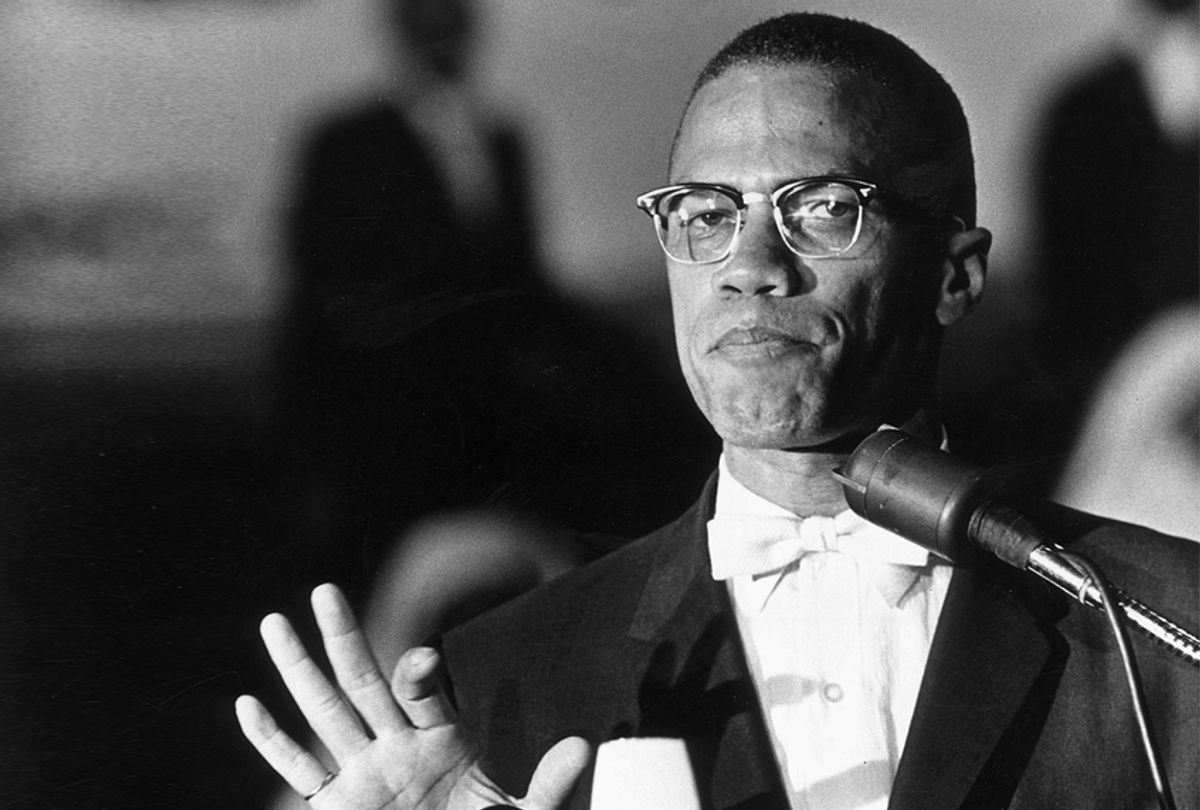The Schomburg Center for Research in Black Culture in Harlem, New York, acquired three revelatory manuscripts in connection to the seminal "Autobiography of Malcolm X": the 241-page manuscript, which includes handwritten corrections, edits, notes and exchanges between Malcolm X and biographer Alex Haley; an unpublished chapter titled "The Negro"; and a series of notes and fragments written by Malcolm X.
The lost writings, particularly the unpublished chapter, had been locked away under the property of various private collectors since Alex Haley's death in 1992. But with the Schomburg Center's acquirement — the public library research center is located on Malcolm X Boulevard — the uncovered writings will be available to the public for the first time. In an interview with Salon, Schomburg Center director Kevin Young describes it as the work of Malcom "coming home to Harlem."
The Schomburg Center already houses some of Malcolm X's writings and papers, including a diary, letters, speeches, photographs and journals, but "we really wanted to see Malcom in full," Young told Salon, "and that’s what I think you can see in this collection that we’ve added. It's another side of Malcolm X. Perhaps a missing side in some sense, but also, at some levels always there, and now it's being reunited together."
There had long been rumors of three unpublished chapters from the landmark "Autobiography of Malcolm X." One explanation was the chapters were chopped from the final print after Malcolm X's murder in 1965 because they were seen as too inflammatory.
According to The New York Times:
Their possible existence was first teased at in 1992, when a private collector at an estate sale scooped up material belonging to Alex Haley, Malcolm X’s collaborator on the book. Years later, one biographer was allowed a 15-minute look at some of the papers, but otherwise they have been mostly locked away, surrounded by a haze of cultivated mystery.
But with the Schomburg Center's successful bid of $7,000, scholars will finally have a chance to speculate about and study this unpublished chapter.
For Malcolm X, who is one of the most studied figures in history, and for the "Autobiography of Malcolm X," which is considered one of the most important pieces of literature of all time, more information about it — a wider lens into the icon, is incredibly significant.
Young said that part of the expansiveness of Malcolm X — the larger than life aspect of his being, in itself is a metaphor that Malcolm understood. "He was using his own life and this — his autobiography — to help understand the life of black people in United States." It's a message, a story and a way of communicating that continues to resonate globally, decades beyond his life span.
Young added that while he recognizes that the unpublished chapter has a slightly different tone than the rest of the book, it is not clear if that's why it was excluded from the final autobiography.
"I think what’s striking is, it's also not that far from what you get in the rest of the book and you can see [that] in the fuller manuscript," he said. "That’s why I think it [is] so important these two things are talking to each other, because it isn't just the dialogue of Haley and Malcolm X in the fuller manuscripts, it’s also the fuller manuscript with this excluded portion that were talking to each other."
"The Negro" is the only manuscript that resembles a full chapter, and none of the other writing fragments that the Schomburg Center acquired substantiate the claim that there are two additional unpublished chapters. But Young said that's the beauty of the archives: These documents will now be available for public inquiry.
The notes and writing fragments may also lead to new, fascinating insights about Malcolm X. Young describes one of the fragments as "just a little slip of paper, probably half an inch high, two lines of type," he said. "But it says in one sentence, almost like a tweet, a powerful statement about the state of affairs. I think those are the kinds of things that I also want to think about and not forget, because those are also telling a story. That's what I think an archive does, is it tells a story — about not just its makers, but about we, who seek out this material, and treasure it."
For Young, the acquisition feels full circle. Original writings from and about Malcolm X will now live on Malcolm X Boulevard, in Harlem, among the writings of James Baldwin and the papers of Ella Baker, and the A. Philip Randolph Collection and the Paul Robeson Collection and the archives of Ann Petry, the first black woman to be on the best-seller list, who famously wrote about Harlem.
"All these are people who speak to different sides of Harlem, across the 20th century," Young said. "Harlem provides an important lens as a cultural capital of the world and of black culture."
The Schomburg Center is working to process the Malcolm X manuscripts as quickly as possible, so scholars and the community can access and engage with them. Young and those at the Schomburg Center want to make clear, "these archives are for them; they’re ours collectively."



Shares